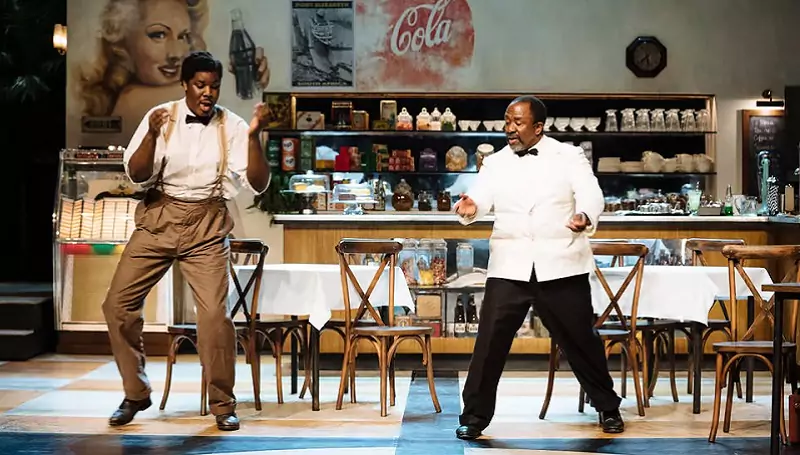‘”Master Harold”…and the Boys’, Athol Fugard, National Theatre
Neil Dowden on the South Bank
1 December 2019
Athol Fugard considers his 1982 play Master Harold… and the Boys to be “probably the most intensely personal thing l have ever written”. lt’s an autobiographical piece (even the names of the characters are taken from his own life) that seems to have been written as a means of atonement but resonates in a much wider social context. With characteristic intimacy, through the format of a tight three-hander he exposes the vicious nature of the apartheid era in South Africa with quiet devastation.
The play is set in in St George’s Park, Port Elizabeth, in 1950 in a tearoom that is similar to the one owned by Fugard’s family. With the pouring rain deterring customers, black waiters Sam and Willie are inside the cafe rehearsing for the finals of a ballroom dancing competition. When their white employers’ seventeen-year-old son Hally arrives from school they greet him with affection, as they have formed a friendship with him while he grew up as a lonely boy.
But Hally is bitterly upset when his mother phones to tell him that his alcoholic and disabled father (who lost a leg in World War Two) is about to return home from hospital, and so when Sam tries to reason with him Hally turns his anger on the two servants, insisting they call him “Master Harold” since they are only “boys”. The then-legalized racism of South African society raises its ugly head.
Most of this one hundred-minute slow-burning play proceeds with a gentle, sometimes humorous tone. lndeed some of the conversation even seems rather inconsequential, but in the final third the mood becomes more intense and much darker as damage which cannot be repaired is done to relationships. Fugard is brutally honest about his young self, and there is a sense of shame in the way Hally treats his two friends as inferior simply because of the colour of their skin.
Because of Hally’s dislike of his abusive, racist father (whom he also resents having to care for sometimes), Sam has become a surrogate father him so Hally’s demeaning attack is particularly wounding. The implication is that personal relations are inevitably poisoned by the pernicious culture around them in apartheid South Africa. The judicious Sam helped Hally with his homework in the past, but Hally claims he is the one who educated Sam, comparing himself to Tolstoy educating the peasants. Hally’s apparently liberal attitudes to social reform and his belief in “progress” are shown to be shallow pretensions when he reverts to naked bigotry by humiliating Sam and Willie as he passes from the innocence of childhood to the tainted adult world.
Sam reveals that although one of Hally’s happiest memories is of Sam taking him to a hill to fly a kite made out of junk — like the spirit of freedom rising above the constraints of everyday life – unknown to Hally the bench where he sat was for “Whites Only”. But the play’s main metaphor is the escape afforded by ballroom dancing — “a world without collisions” where social harmony prevails and which Sam and Willie dream of.
Roy Alexander Weise’s wonderfully subtle production brings out the tenderness between characters as well as the underlying tensions. And the show ends beautifully as designer Rajha Shakiry’s meticulously detailed tea cafe is transformed into a romantic ballroom with Paule Constable’s dreamlike lighting as the jukebox plays Bing Crosby and (choreographed by Shelley Maxwell) the two men glide across the floor in perfect unison.
The cast is excellent. As Sam, Lucian Msamati gives a performance of great emotional depth, suggesting a wise man with a wealth of hard-earned experience who has not lost his dignity or self-respect despite enduring poverty, discrimination, police beatings, and other humiliations in an apartheid state. ln a slighter role, Hammed Animashaun does very well as the more deferential, not-so-bright but big-hearted Willie. And Anson Boon also impresses on his stage debut as the arrogant and patronizing, immature and needy Hally, in Fugard’s unsentimental portrait of the artist as a young man.









